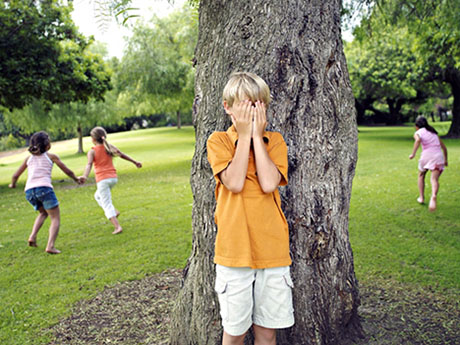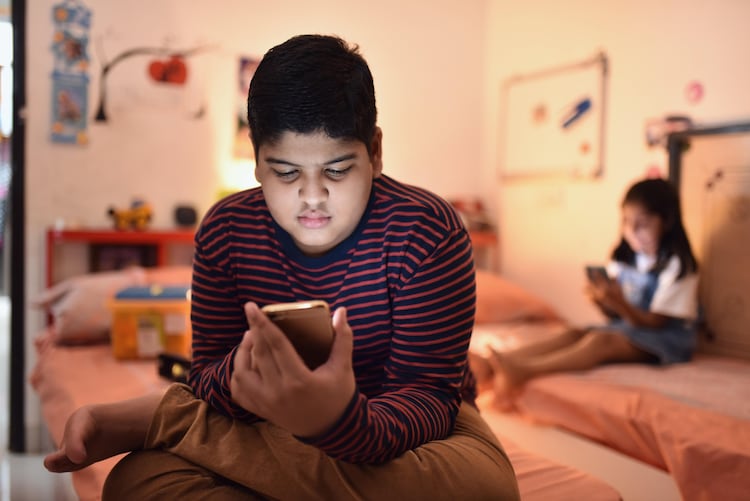The Silent Destruction: How Digital Heroin Has Made Kids Dance In Its Dangerous Tune?

Remember when the neighborhood was meant with the sounds of kids playing? When summer meant playful afternoons and dirty clothes, not hunched shoulders and glued eyes to screen?
A drastic change took place so gradually that many of us failed to notice until the situation become too late. What began as a harmless convenience – a device to keep kids occupied while parents managed increasingly demanding lives – has morphed into something far more sinister: the wholesale replacement of childhood itself.
The neighborhood streets where kids once played kickball until dusk now stand eerily silent. The vacant lots where imaginary worlds were constructed have been abandoned. The physical sphere of childhood has been gradually evacuated, with children’s consciousness transferred to the bright rectangles that now dominate their waking hours. This vast movement from the physical to the digital constitutes one of the most fundamental changes in childhood experience since the Industrial Revolution moved youngsters from fields to industries. But unlike that transition, which provoked immediate outrage and eventual regulation, this transformation has been welcomed through our front doors with minimal resistance.

Historically, childhood has undergone various transformations reflecting the socioeconomic conditions of different eras. In pre-industrial cultures, kids were little adults who worked alongside their parents in fields or crafts. The Victorian era popularized the concept of youthful innocence, yet this luxury was mostly reserved for the higher classes, while poor kids worked in factories and mines.
The post-war period of the 20th century witnessed what might be considered the golden age of childhood freedom – economic prosperity allowed kids time for unstructured play while neighborhoods were considered safe enough for exploration without constant adult supervision. According to historian Howard Chudacoff, this time saw the “development of children’s culture,” in which children formed their own societies with different rules and rituals that were independent of adult influence.
Fast forward to today, and the contrast couldn’t be more disturbing! Kids today are experiencing what might be called “containment childhood” – physically safe but mentally vulnerable, their bodies protected within the four walls of home while their developing minds are exposed to whatever content algorithms determine will maximize engagement. Like the famous experiment where frogs placed in gradually heating water fail to jump out until it’s too late, we’ve incrementally normalized children spending hours each day in what amounts to voluntary sensory isolation chambers, divorced from physical reality and authentic human connection.

The statistics paint a bleak picture that would horrify parents from any previous generation. American children between ages 8 and 12 now spend an average of 4-6 hours daily on screens, while teenagers rack up a staggering 7-9 hours – more time than many spend sleeping or in school. In India, studies show urban children averaging 5-7 hours of daily screen time, with the numbers rising yearly. These estimates roughly doubled during the pandemic, establishing patterns that have remained long after lockdowns ended. Perhaps most concerning, the age of initial screen exposure continues to decrease, with many newborns already being handed phones before they can walk or talk.
What makes this evolution so pernicious is the advanced psychology used to manipulate childhood behavior. Unlike the passive entertainment of television that previous generations consumed, today’s digital platforms leverage principles of variable reward – the same mechanism that makes slot machines addictive – to create compulsive usage patterns in developing brains. Each swipe, each notification, each auto-playing video delivers a small hit of dopamine, conditioning children to seek digital stimulation with the same neurological urgency as basic biological needs. As addiction specialist Dr. Anna Lembke explains in her research, “We’ve effectively turned childhood into an extended experiment in addiction formation, creating reward patterns in developing brains that may prove extremely difficult to reverse.”
The consequences of this massive shift extend far beyond mere displacement of physical activity. Developmental psychologists have identified disturbing patterns linked with increased screen time that includes disturbing parameters like less empathy, shorter attention spans, worse language development, and a lower capacity for delayed gratification.
Perhaps most concerning is what’s being termed “reality disassociation” – children who find the physical world increasingly foreign, overwhelming, or simply boring compared to the hyper-stimulating digital environment. Renowned child psychologist Jean Twenge’s research shows that post-2012 (when smartphone ownership crossed the 50% threshold among teenagers), rates of teen depression increased by 65%, while reported happiness and life satisfaction plummeted.
Consider the stark contrast with childhoods of even the recent past. 15 years ago, being bored was not a bad thing; rather, it was a necessary condition for creativity. Youngsters gained confidence and resilience by learning how to amuse themselves, create games, bargain with peers, settle disputes without the help of an adult, and take calculated risks. The unstructured outdoor play that dominated childhoods for generations wasn’t just recreation – it was a sophisticated developmental technology perfected over millennia to build capable, confident, socially adept human beings. As psychologist Peter Gray notes in his research on play deprivation, “We’ve replaced the evolutionary-matched environment of childhood with something completely foreign to human development, and we’re only beginning to understand the consequences.”
The most heartbreaking aspect of this transformation is that today’s children cannot possibly miss what they never experienced. When asked what they prefer, many people say they are really unsure about whether playing outside or interacting with people in person is more appealing. Children who have never had the delight of playing flashlight tag in the dark or constructing a fort out of branches sometimes ask, “What would I even do outside?” The digital experience has been optimized for engagement to such a degree that reality – with its slower pace, physical limitations, and lack of constant novelty – simply cannot compete in the attention economy.

Parents find themselves in an impossible position, caught between awareness of the problem and the practical realities of modern life. How does one deny a child the digital connection their peers all enjoy? How does one create opportunities for outdoor play in neighborhoods where other children are conspicuously absent? How does one impose limits when screens are increasingly required for homework? And most challenging of all, how does one compete with billion-dollar companies employing armies of engineers and psychologists specifically tasked with capturing and maintaining children’s attention?
The corporate motivations behind this childhood transformation should disturb us deeply. Unlike the playground equipment manufacturers of previous generations who sold products once and were done, today’s attention merchants have created a business model predicated on maximizing “engagement time” – corporate-speak for the minutes and hours extracted from a child’s finite existence on this planet. For companies that turn attention into advertising income, every hour spent scrolling signifies not just a loss of potential opportunities but also real monetary worth. “We’ve transformed childhood into an extractive business, mining children’s attention as we once mined coal, with similarly terrible long-term effects,” tech insider Tristan Harris has warned on several occasions.
We are not saying that there are no advantages to digital technology. Information access, coding courses, and educational applications are examples of real advancements that earlier generations may have admired. However, the balance has shifted significantly in favor of isolation over community, passive browsing over active learning, and consumption over production. The technology itself remains neutral – it’s the business models, usage patterns, and displacement of essential developmental experiences that constitute the true crisis.
Historical perspective offers some reason for cautious optimism. Society has, at various points, recognized and corrected exploitation of children – from labor laws that ended child factory work to advertising regulations that limited marketing to young minds. The question remains whether we will recognize the current crisis for what it is: not merely a change in childhood leisure activities but a fundamental rewiring of developing brains and restructuring of childhood experience in ways that may prove difficult to reverse.
The path forward doesn’t require abandoning technology but reclaiming intentionality about its role in childhood. It involves creating appealing substitutes that can kill digital dopamine hit, that is gained from screens, like adventure playgrounds, public areas, and neighborhood projects that value kids’ random playtime. It means realizing that being bored is a necessary developmental experience that fosters creativity rather than a problem that has to be handled. Perhaps most importantly, it is admitting that we have unintentionally permitted corporate interests to occupy childhood itself, making money off of our kids’ most valuable and finite resource: their attention.
As author Richard Louv asked in his seminal work on nature-deficit disorder, “What would our lives be like if our days and nights were as immersed in nature as they are in technology?” We might similarly ask: What might childhood be like if it were as rich in authentic experience, physical adventure, and genuine connection as it currently is in digital consumption? The answer, surely, is a childhood that builds stronger, happier, more capable humans – the kind who might eventually create technology that enhances rather than replaces the experiences essential to healthy development.
The digital genie cannot be put back in the bottle, nor should we necessarily wish for such a regression. But neither should we continue sleepwalking toward a future where childhood exists primarily as a marketing demographic rather than a developmental necessity.




